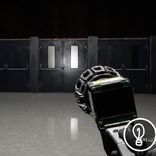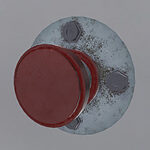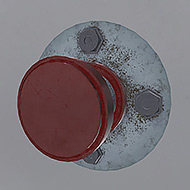BUTTON PRISON is a logic-based puzzle game that tests your ability to experiment, deduce, and react under pressure. Each level places you in a sealed chamber filled with buttons — and no instructions. The only way forward is by discovering the correct input sequence to open the exit, but with every failed attempt, new complications arise. Designed around trial-and-error learning and abstract thinking, this game challenges players to uncover hidden logic within chaos.
Room-by-Room Puzzle Design
Every stage in BUTTON PRISON is a new test of logic and spatial reasoning. The player starts in an enclosed space with several buttons that offer little to no visual indication of their purpose. Some buttons trigger traps. Others may light up or emit sounds. You’re given no rules — just patterns to decipher. The design encourages experimentation as players interact with their surroundings and build a mental map of what works and what doesn’t.
With each successful level, the room complexity increases. The interface remains minimalist, but the depth of the puzzles grows. You may find sequences requiring simultaneous presses, time delays, or conditional responses based on the state of other buttons. And failure isn’t passive — mistakes often reset puzzles, introduce penalties, or completely scramble the button functions.
Chaos as a Game Mechanic
The central theme in BUTTON PRISON is confusion. But behind that chaos lies a well-structured logic system that punishes rash decisions and rewards players who can spot subtleties in feedback. Each level may introduce new variables, including:
- Timed inputs: Certain solutions require quick execution with precise timing.
- Decoy mechanics: Some buttons exist solely to confuse and mislead.
- Unlabeled sequences: Solutions involve input chains with no visible markers — players must memorize the correct order.
- Randomized reconfiguration: Rooms may reset button functionality after each failed attempt, forcing complete reevaluation.
Efficiency, Memory, and Pattern Recognition
- Don’t rush: Observe room layout and initial button responses before committing to full sequences.
- Keep mental notes: Track each button’s behavior carefully across multiple attempts.
- Listen closely: Sound cues often reveal which inputs are correct, especially in multi-stage rooms.
- Start from the edges: Buttons near walls or corners tend to provide structural insights into the puzzle flow.
BUTTON PRISON delivers a uniquely cerebral gameplay experience rooted in chaos-driven logic. It’s a game that rewards persistence, patience, and abstract thinking. Each successful escape from a puzzle room feels earned, turning confusion into clarity through sheer determination and focus.













 Fullscreen
Fullscreen


